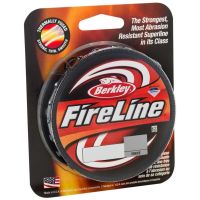Well, I’m sure we have all heard the horror stories of using baitcast reels. The birdsnests, tangles etc, make it hard to learn so many people just give up and lose a valuable fishing tool. These tips will hopefully ease the growing pains and help us all to use baitcast reels a little better.
Once you have made a decision to purchase a baitcasting reel choosing the right line becomes very important. Baitcasting reels generally operate better with heavier line in the 14 - 17 lb. test range. Starting with a heavier line is best. The larger diameter does not allow it to come off the spool as easily as lighter line making proper casting technique and timing easier to grasp. You can choose one of the Super lines, such as Fireline or Spiderwire, however, the smaller diameter makes it more difficult to cast and they are considerably more expensive. Monofilament would be a better choice for the beginner as it is easier to work with and less expensive to deal with the inevitable birdsnests (tangles) that may have to be cut out.
Once the reel is spooled with line there are some set-up features that need to be adjusted prior to casting. With the reel attached to the rod, the line passed through the guides and the lure tied on, hold the rod horizontally and depress the thumb line release. The lure should gradually fall to the ground. If the lure does not, simply loosen the brake adjustment dial located on the side of the reel. If the lure falls too quickly and causes the spool to overrun, tighten the brake adjustment dial. You may have to do this a few times in order to get the proper adjustment. This should be done each time you change the lure. Once you are set up and ready to cast it is your thumb that will control the spool. Press the release button and hold your thumb on the line to prevent the spool from turning. When you cast, remove the pressure on the line to allow it to come off the spool but leave your thumb in light contact with the turning spool to prevent it from over running (spool turning faster than the line is going out). At the end of the cast your thumb should apply increasing pressure until the spool stops rotating.
A new innovation was introduced to baitcasting several years ago in the form of a magnetic drag control. This feature is particularly useful for beginners. This adjustment dial is usually located on the opposite side of the handle. Increasing the magnetic drag puts more resistance on the spool reducing the tendency to over run which can cause a birdsnest. The magnetic drag should be set fairly high while learning to cast. This will result in somewhat less casting distance but will reduce the chance of a backlash. Once you are more comfortable with casting you can turn down the magnetic drag setting. It is still necessary to control the spool with your thumb but this feature makes it much easier and seriously reduces the time spent untangling line.
You can cast overhead or sidearm, whichever is more comfortable for you, although sidearm may be better to establish timing. Casting a baitcasting reel is not about force. It is about technique and timing. Release the line just before the halfway point of a full casting motion. Your cast should go directly in front of you. Initially, if you are right handed, you will send the lure off to the left or if casting overhead into the water right in front of you. The accuracy associated with baitcasting will come with practice and experience.
A lot of people give up on baitcast reels because it can be difficult but using this style of casting is no different than anything else, it takes time to learn. Give yourself a chance, be patient, you have nothing to lose and only additional angling skills to gain.
Good luck and good fishing.

